How to Marzipan a Fruit Cake for Christmas
If you’ve ever wondered how to marzipan a fruit cake without it cracking, sliding or turning into a sticky mess, you’re in the right place. It’s one of those baking jobs that feels a bit technical, especially if you only do it once a year, but I promise it’s much easier than it looks. With a few simple tips and a bit of gentle handling, you can get a beautifully smooth, professional-looking finish that makes your Christmas cake look instantly more polished.

In this post I’m sharing a full step by step on how to marzipan a fruit cake, with clear photos so you can see exactly what each stage should look like. Once your cake is ready for its layer of marzipan, you can follow along at your own pace and feel totally confident about the process from start to finish.
What You’ll Need:
- Fruit cake – fully cooled
- Marzipan – enough to cover your cake (approximately 250–300g per 1kg cake)
- Cake board, cake plate or card
- Rolling pin
- Icing sugar – to stop the marzipan sticking to your work top
- Apricot jam – ideally boiled and sieved to take out any large lumps
- Sharp knife – for cutting the marzipan
- Cake smoothers
- Greaseproof paper circle cut the same size as your fruit cake
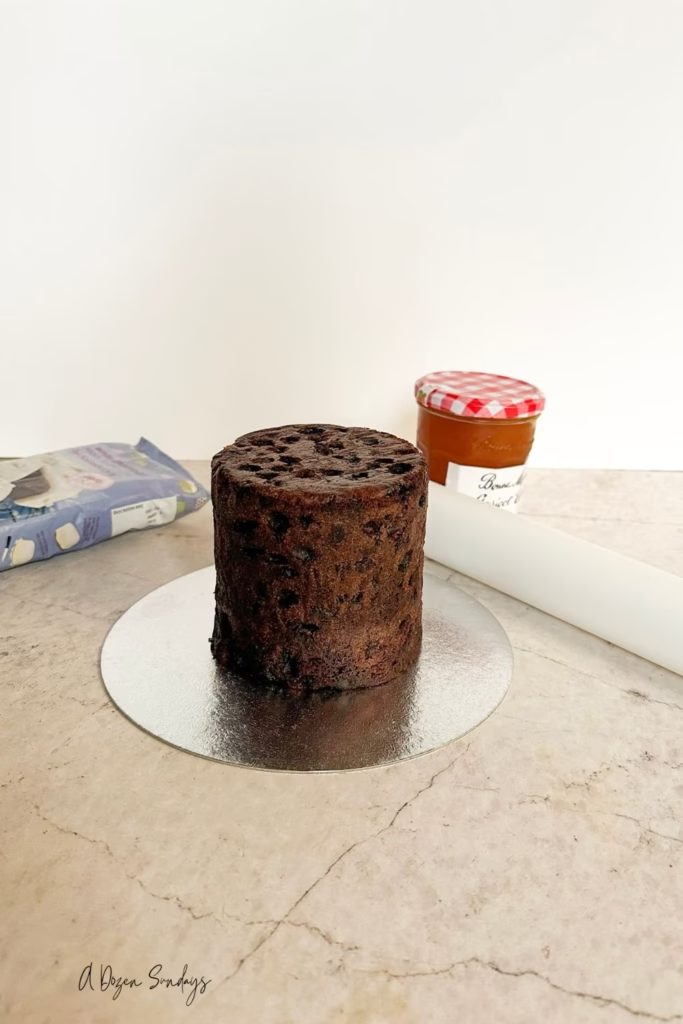
How to Marzipan a Fruit Cake:
Step 1: Prepare the cake
- Make sure the fruit cake is completely cooled! Ideally you would bake your cake the day before and and rest it overnight.
- Brush/spread a thin, even layer of warmed apricot jam or neutral glaze all over the cake. This helps the marzipan stick and prevents it from drying out.
Step 2: Divide the marzipan
- For a round cake, you cut the marzipan into a top circle and a long side panel which will wrap around the cake.
Step 3: Roll out the top circle
- Measure the top and roll out a piece slightly larger than the cake diameter to cover the top. I like to use a circle of greaseproof paper as a guide, but you could use your cake tin or a cake card or board the same size as your cake.
- Roll the top piece to about 2–3mm thick.
- Carefully lift it with the rolling pin and lay it on top of the cake.
- Smooth gently from the centre outward using your hands or a cake smoother to remove air bubbles.
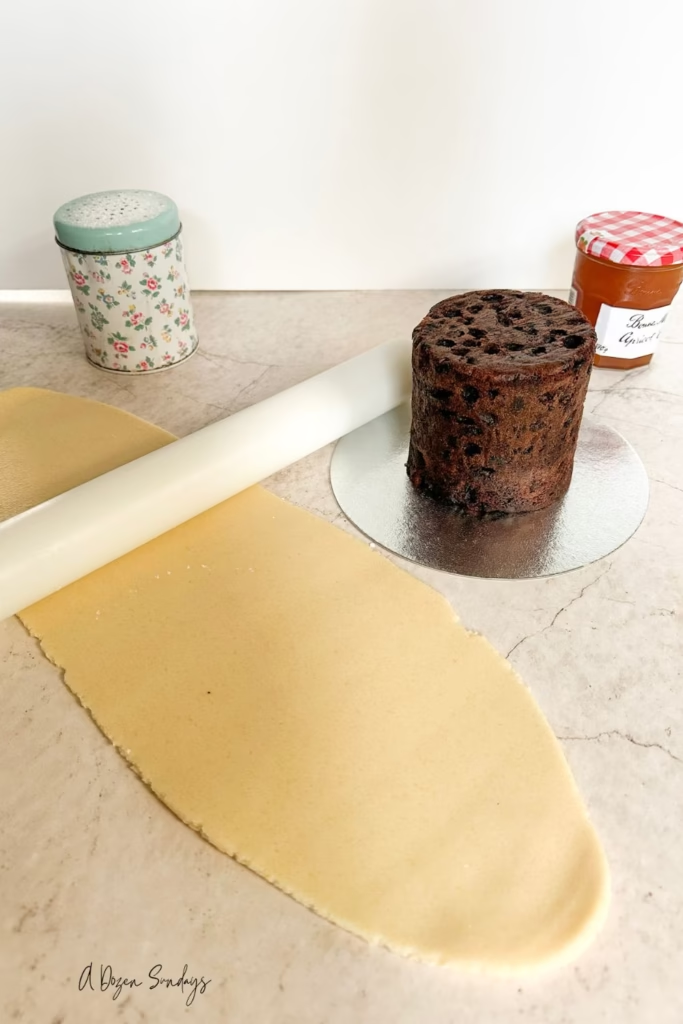
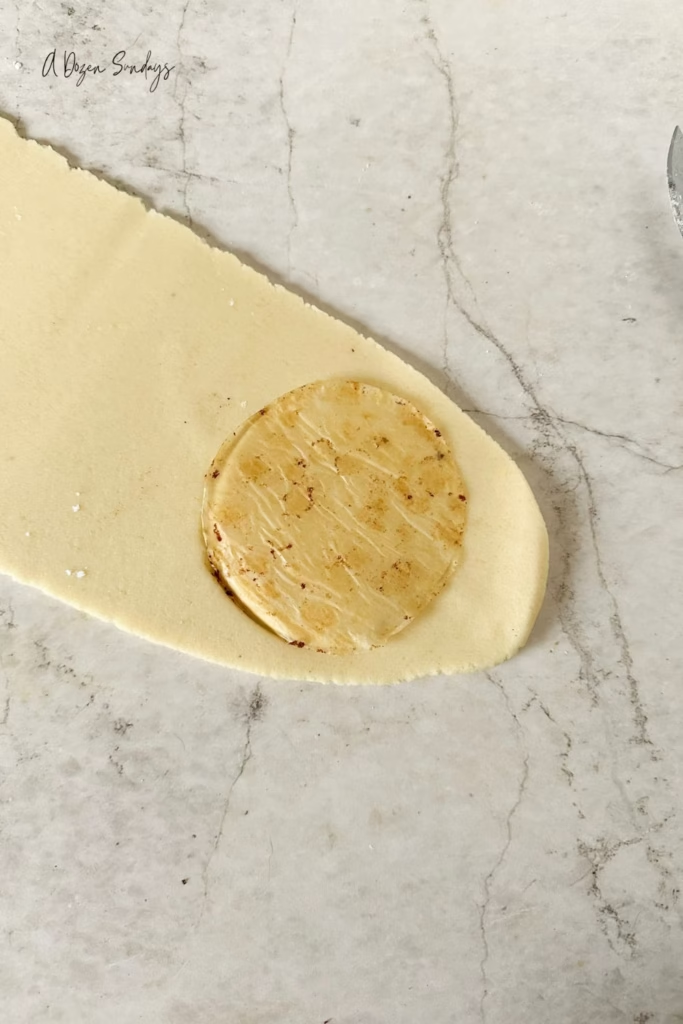
Step 4: Roll out and attach side piece
- Roll the marzipan into a long rectangle. The short side needs to be slightly taller than your cake. You can use a piece of ribbon or string to check the panel will be long enough to fit round the cake.
- Cut a straight edge on the rectangle, and roll the marzipan into a tube from the uncut end.
- Starting with the straight edge, wrap the panel around the cake, pressing lightly against the jam to stick it to the cake. Smooth with a cake smoother to create an even finish.
- Slightly overlap the ends of the side panel and trim any excess at the join with a sharp knife. You’ll be left with a smooth side but a ruffled top!

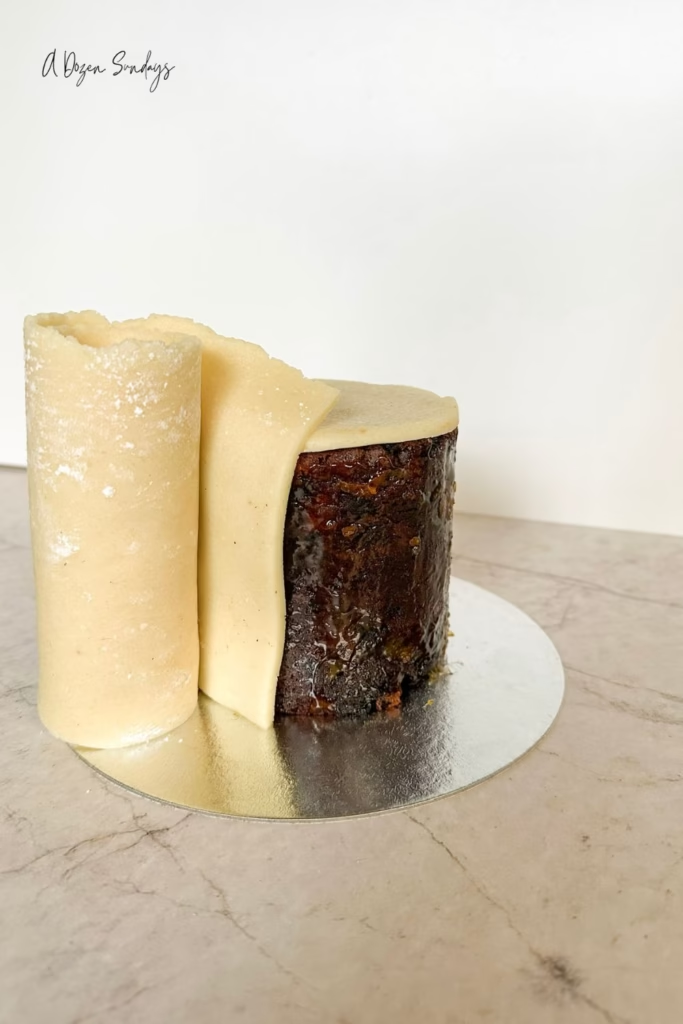
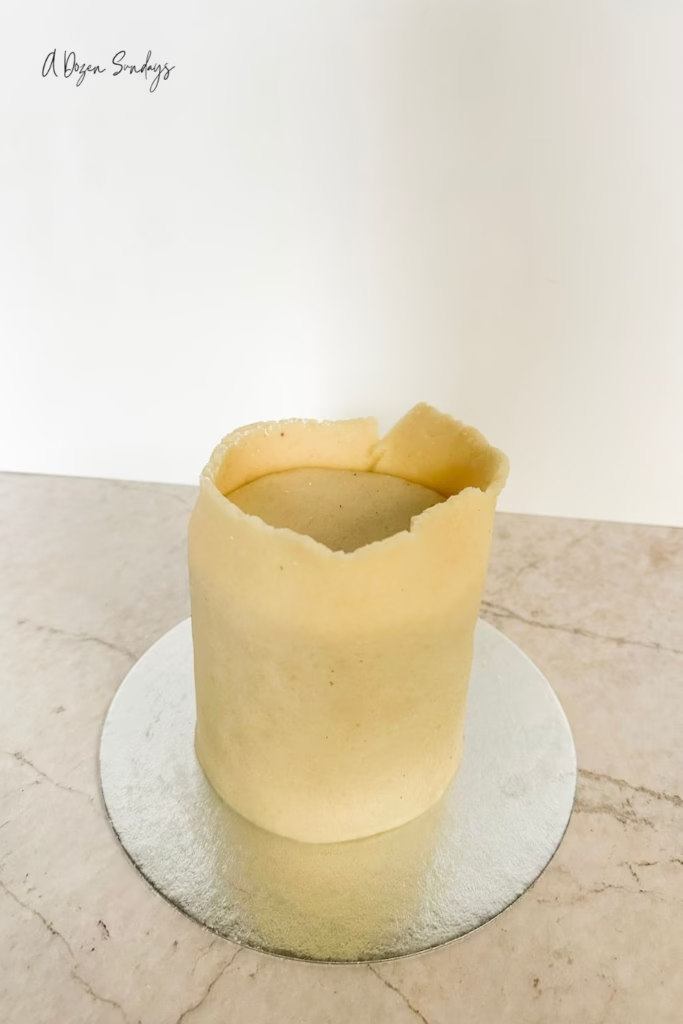
Step 5: Trim the Top
- Using a sharp knife, trim off excess marzipan from the top of the cake.
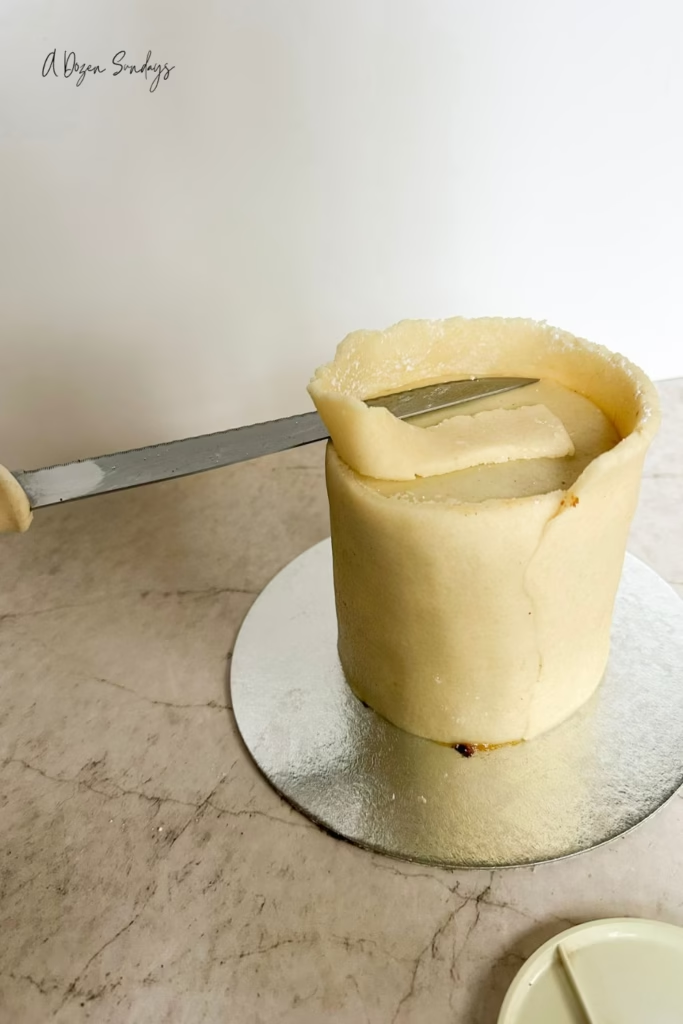
Step 6: Smooth and refine
- Use a cake smoother to gently go over the top and sides, ensuring the marzipan is flush and free of bumps.
- Flip the cake upside down onto a surface dusted with icing sugar and use a cake smoother to get a sharp edge on the marzipan. Gently press down on the cake with one hand and work the smoother against the top edge with the other, turning the cake as you go. When you’re happy, flip the cake the right way up and brush off the excess icing sugar.
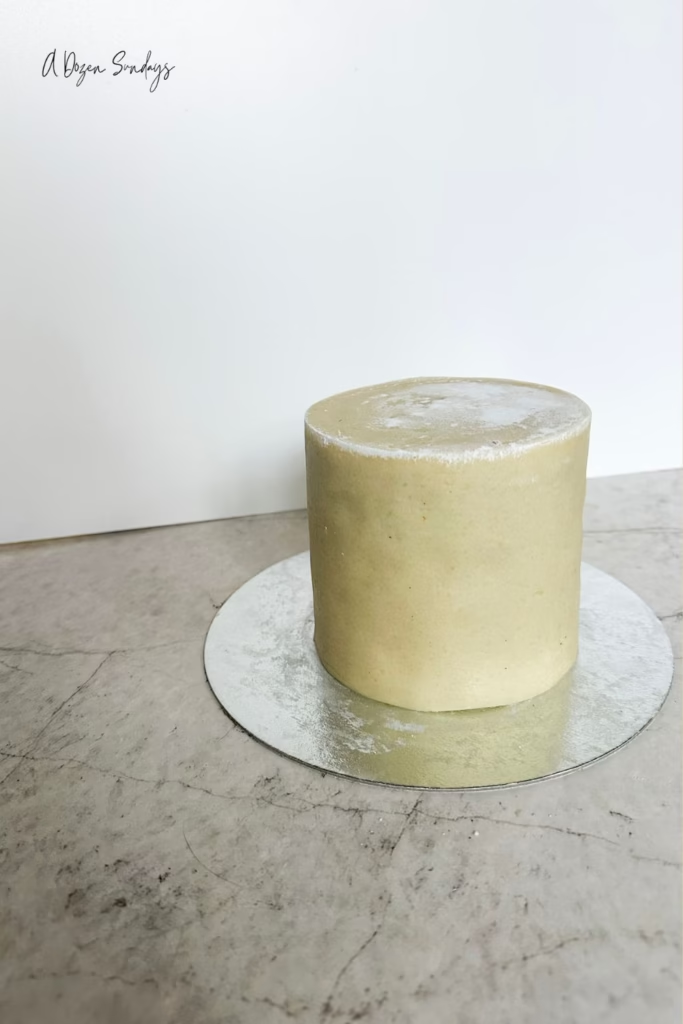
Step 7: Rest before icing
Allow the marzipan to rest for at least 24 hours. This firms it up and reduces moisture transfer when covering with royal icing or fondant.

Marzipanning your fruit cake doesn’t have to be tricky. By breaking the marzipan into a top circle and side panel, you can achieve a smooth, even finish with minimal stress, because this time of year is stressful enough! Once your cake is rested and firm, it’s ready for icing, decorating, or gifting – and you’ll have a beautiful, professional-looking fruit cake to impress everyone this season.
You might also like: Simple Fruit Cake Recipe





